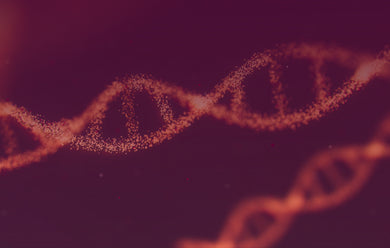Science first
Tally Health was born in the lab, driven by our scientists’ shared vision to put the power of cutting-edge aging science in your hands. From our longevity formulations and groundbreaking TallyAge™ Test to pioneering research led by our in-house scientists, every innovation we bring to you is designed to transform the way you live today, so you can thrive tomorrow.
Science with standards
Our pursuit for living healthier, longer is only matched by our relentless pursuit for quality. All ingredients in Tally Health supplements must adhere to three uncompromising criteria:
-

Safe and well-tolerated
There must be multiple double-blind, randomized, placebo-controlled human clinical trials indicating that a specific dose is safe and well-tolerated. -

Targets hallmarks of aging
There should be strong mechanistic evidence indicating that each molecule can alleviate established hallmarks that underlie and drive aging. -

Published longevity benefits
There should be peer-reviewed published data in small mammals that ingredients extend lifespan and/or enhance aspects of healthspan.

Our cutting-edge epigenetic test
Imagine discovering how you’re aging at a cellular level with a painless cheek swab. It’s possible with the TallyAge™ Test, which measures unique DNA methylation patterns that are influenced by health and lifestyle and change over time. Our next-generation test was trained on the largest DNA methylation adult cheek swab dataset: over 8,000 diverse individuals spanning a chronological age range of 18-100 years.
Here’s what makes the TallyAge™ Test unique:
- Generalizable: Trained on a large diverse cohort of healthy adults
- Comprehensive: Uses over 200,000 sites across the entire genome
- Powerful: associates with lifestyle factors and health factors including mortality risk
- Convenient: a simple cheek swab you do at home
- Optimized for accuracy and reproducibility

Supplements that target aging at the source
Our longevity supplements are thoughtfully crafted blends of scientifically validated ingredients, delivering results that single-ingredient supplements can’t match. Each formulation supports vital functions like energy, focus, sleep, immunity, and cellular health—individually powerful and even more impactful when used together. This approach targets the complexities of aging to optimize health at a cellular level.
Relentless innovation
Tally Health scientists don't just follow the science, they advance it. Explore leading longevity research published by Tally's in-house science team.
-
Probing buccal-customized epigenetic clocks to investigate socioeconomic and health disparities
A collaborative study featuring CheekAge, the inspiration behind our TallyAge® clock, analyzed DNA methylation from nearly 800 individuals to understand how epigenetic age connects to real-world health.
-
Using buccal methylomic data to create explainable aging clocks as well as classifiers and regressors for lifestyle and demographic factors
Tally Health research shows that DNA methylation from a cheek swab can reveal not only epigenetic age, but also smoking status, race/ethnicity, BMI, and alcohol intake. We also show it’s possible to explain why someone is a certain epigenetic age using AI-powered, interpretable aging clocks.
-

Realistic expectations for changes to average human lifespan in the near future
Discusses what kinds of longevity gains we realistically can expect in the coming years and emphasizes that improving healthspan is an actionable and attainable goal in the near future.
-
Analysis of variability and epigenetic age prediction across microarray and methylation sequencing technologies
This study reveals that microarrays generally outperform sequencing in reproducibility, and that using clocks that incorporate noise correction drastically improves test-retest error across both technologies.
-
Demystifying common DNA methylation sites that promote the ability of CheekAge to associate with health and disease
Discover the unique DNA methylation sites that help give CheekAge its predictive power—linking them to key genes and pathways involved in aging, disease, and longevity. This breakthrough helps explain why CheekAge can detect powerful health signals, from diet and alcohol intake to chronic conditions like cancer and pulmonary fibrosis.
-

First-generation versus next-generation epigenetic aging clocks: Differences in performance and utility
Explore the science behind first- vs. next-generation clocks—and why next-gen models like CheekAge (the inspiration for our TallyAge Test) better respond to interventions, more strongly associate with mortality risk, and associate with more meaningful health variables.
-
Various diseases and conditions are strongly associated with the next‑generation epigenetic aging clock CheekAge
Using publicly available DNA methylation datasets containing disease and health information, we find that CheekAge is significantly associated with 33 different variables, including pulmonary fibrosis, non-alcoholic fatty liver disease, prediabetes, exposure to the chemical endocrine disruptor PBB-153, major depressive disorder, and various tumors and cancers.
-
Contextualizing aging clocks and properly describing biological age
What is biological age? In this treatise we argue for the importance of detangling this abstract concept from epigenetic clocks and other biomarkers of aging.
-
CheekAge, a next-generation epigenetic buccal clock, is predictive of mortality in human blood
We demonstrate that CheekAge, the epigenetic clock we developed that is the inspiration for the TallyAge™, significantly associates with mortality in a population of older adults.
-
CheekAge: a next-generation buccal epigenetic aging clock associated with lifestyle and health
A deep dive into CheekAge, an epigenetic buccal (cheek) clock that is the inspiration for our TallyAge™ test. In this work we demonstrate that CheekAge is accurate and associates with lifestyle and health factors. We additionally dissect genes and biological processes connected to CheekAge and compare this model to other epigenetic clocks.
-
Apigenin: a natural molecule at the intersection of sleep and aging
An exploration of the scientific evidence for a key ingredient in our Restore supplement.
-
Glycine and aging: Evidence and mechanisms
An in depth overview of the literature surrounding glycine metabolism and its links to aging. Glycine is an important ingredient in our Amplify formulation.
-
A set of common buccal CpGs that predict epigenetic age and associate with lifespan-regulating genes
We review the literature on predicting epigenetic age from buccal (cheek) tissue, build a proof of concept buccal clock, and highlight interesting genes that tie the clock to aging biology.
-
Human age reversal: Fact or fiction?
An overview of interventions and factors linked to a younger molecular age, as predicted by aging clocks.

Partner with Tally Health:
Advance Your Research with Epigenetic Precision
Enhance your research with DNA methylation insights or a next-generation epigenetic aging clock.
We’re excited to collaborate with academic and industry partners on projects involving human DNA methylation or our proprietary TallyAge™ clock—whether using our buccal TallyAge Test kits or your own samples for methylation array analysis.
Reach out at partnerships@tallyhealth.com







